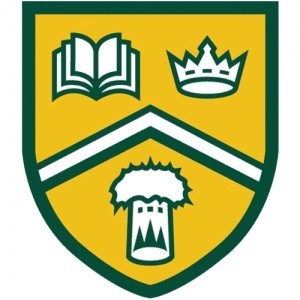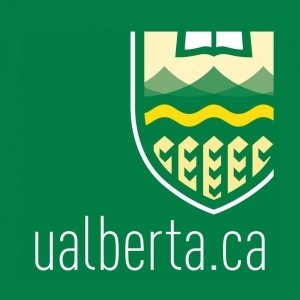Photos of university / #uofreginaofficial
The Bachelor of Arts in Art History at the University of Regina offers students a comprehensive exploration of the visual arts across different periods, cultures, and regions. This program is designed to develop students' critical thinking, analytical skills, and appreciation for the diverse ways in which art reflects and influences societies. Students will engage with a wide range of visual media, including painting, sculpture, architecture, and newer digital forms, examining them within their historical, cultural, and social contexts. The curriculum combines rigorous coursework in art history theory and methodology with opportunities for practical research and interpretation. Through lectures, seminars, and research projects, students will learn to analyze artworks, interpret their significance, and communicate their insights effectively. The program emphasizes the development of visual literacy, enabling graduates to pursue careers in museums, galleries, arts administration, education, and cultural policy. In addition to core courses in Western and non-Western art traditions, students have the opportunity to specialize in specific areas of interest, such as Indigenous art, contemporary art, or European art history. The program encourages experiential learning, including visits to art exhibitions, internships, and collaborative projects with local arts organizations. Graduates of the Art History program are well-equipped to pursue graduate studies or careers that require a deep understanding of visual culture. The program aims to foster a lifelong appreciation of art and its role in shaping human history and contemporary society, preparing students to become informed, critical, and culturally engaged individuals.
Art History at the University of Regina offers a comprehensive and engaging program designed to provide students with a deep understanding of visual culture across different periods and regions. The program explores the development of art from ancient times to contemporary practices, emphasizing critical analysis, historical context, and theoretical approaches. Students will examine a wide range of artistic movements, including Classical, Medieval, Renaissance, Modern, and Contemporary art, gaining insight into the cultural, social, religious, and political influences that shape artistic expression throughout history.
Our curriculum combines coursework in art analysis, history, and theory with practical opportunities for research and curatorial activities. Students learn to interpret artworks through detailed visual analysis, contextual research, and critical discussion, fostering skills that are essential for careers in museums, galleries, education, and academia. The program encourages an appreciation of diverse cultural perspectives and supports students in developing a globally informed understanding of art history.
Throughout the degree, students have access to a variety of learning resources, including our specialized library collections and digital archives. They can participate in exhibitions, workshops, and field trips to regional museums and cultural sites, which enhance their experiential learning. Faculty members are experienced scholars and practitioners who mentor students and guide their research projects.
The Bachelor of Arts in Art History prepares graduates for advanced study, professional roles in cultural institutions, art criticism, and related fields. With a flexible curriculum structure, students can tailor their education with electives and minors to suit their interests. Whether pursuing a deep academic interest or aiming for a career in the arts sector, students gain valuable analytical, communication, and research skills vital for success in a diverse and evolving cultural landscape.
The Bachelor of Arts in Art History at the University of Regina requires students to complete a total of 120 credit hours, including a combination of core courses, electives, and a capstone project. Students must begin with foundational courses that introduce them to various periods and regions of art history, such as Western Art, Non-Western Art, and Methods and Theories of Art History. These foundational courses provide essential analytical tools and contextual knowledge necessary for advanced study.
Following the introductory courses, students are encouraged to select specialized electives to deepen their understanding of specific areas such as Renaissance and Baroque Art, Modern and Contemporary Art, Asian Art, African and Indigenous Art, among others. Electives may include topics like Museum Studies, Art Conservation, and Curatorial Practices, allowing students to gain practical experience in the field. To fulfill graduation requirements, students must also complete a research-based Capstone Seminar, which involves a significant research project or a comprehensive paper under the supervision of a faculty member. This project aims to develop students’ critical thinking, research, and writing skills.
Additional program requirements include participating in seminars, discussions, and possibly internships or cooperative education placements to gain real-world experience. Students must also demonstrate proficiency in written and oral communication skills, often through assignments, presentations, and comprehensive examinations. The program emphasizes interdisciplinary approaches, critical analysis, and understanding of art within historical, cultural, and social contexts.
Graduate attributes include the ability to analyze visual and material culture, research effectively using various resources, and communicate ideas clearly and persuasively. Students are encouraged to attend gallery exhibitions, participate in academic conferences, and engage with professional communities in art history. Overall, the program prepares students for careers in museums, galleries, curatorial work, art conservation, education, and further academic study.
Want to improve your English level for admission?
Prepare for the program requirements with English Online by the British Council.
- ✔️ Flexible study schedule
- ✔️ Experienced teachers
- ✔️ Certificate upon completion
📘 Recommended for students with an IELTS level of 6.0 or below.
The University of Regina offers various financing options for students enrolled in the Art History program. Students are encouraged to explore multiple sources of funding to support their academic pursuits. The university provides scholarships, bursaries, and awards that are available based on academic merit, financial need, or specific criteria related to the program or student background. Admission scholarships are often awarded automatically upon acceptance, while others require a separate application. Additionally, the university participates in government-funded student loan programs that help eligible students finance their education through federal and provincial student loans. There are also work-study opportunities within the university, allowing students to gain valuable experience while earning income to offset educational expenses. Students can consider external scholarships and grants from private organizations, arts foundations, and community groups dedicated to supporting arts and humanities students. The university's financial aid office provides comprehensive guidance and resources to help students identify and apply for these funding sources. It is important for students to meet application deadlines and fulfill eligibility requirements to maximize their chances of receiving financial assistance. Budgeting and financial planning are also recommended to manage educational costs effectively throughout the duration of the program. The university may offer payment plans or tuition deferral options to ease financial burdens during the academic year. Lastly, students are advised to stay informed about new funding opportunities and updates related to scholarships or financial aid programs by regularly consulting the university’s official website and contacting the financial aid office directly. Accessing these resources early can significantly enhance a student’s ability to finance their studies and complete their degree successfully.
The Bachelor of Arts in Art History at the University of Regina provides students with a comprehensive understanding of the history of art and visual culture from ancient times to contemporary periods. This program aims to develop students' analytical skills, critical thinking, and appreciation for diverse artistic traditions across different cultures and timeframes. Throughout the course, students will engage in detailed visual analysis, learn about the socio-cultural contexts of artworks, and develop research skills vital for careers in museums, galleries, education, and cultural heritage management.
The curriculum covers a wide range of topics, including Medieval and Renaissance art, Modern and Contemporary art, and non-Western art forms. Students have opportunities to study various art forms such as painting, sculpture, architecture, and new media. The program combines theoretical coursework with practical experiences, including visits to art galleries, exhibitions, and potentially internships, to give students real-world exposure.
Faculty members are experienced scholars with expertise in different areas of art history, providing mentorship and guidance to students. The program encourages critical inquiry through seminars, research projects, and presentations that prepare students for further graduate study or employment in arts-related fields. The degree emphasizes the development of visual literacy skills, historical knowledge, and an understanding of curatorial practices.
Students can tailor their studies by choosing electives aligned with their specific interests, such as Indigenous art, gender and sexuality in art, or digital humanities. The program also provides foundational knowledge for advanced graduate studies, including master's or Ph.D. programs, should students choose to pursue further academic achievements.
Graduates of the Bachelor of Arts in Art History at the University of Regina are equipped with skills highly valued in cultural institutions, educational organizations, and the arts community. They are prepared to analyze and interpret artworks critically, communicate effectively about cultural artifacts, and contribute to cultural preservation and education. Overall, this program fosters a deep appreciation for artistic achievements across history and promotes interaction with the visual arts in a scholarly context.


